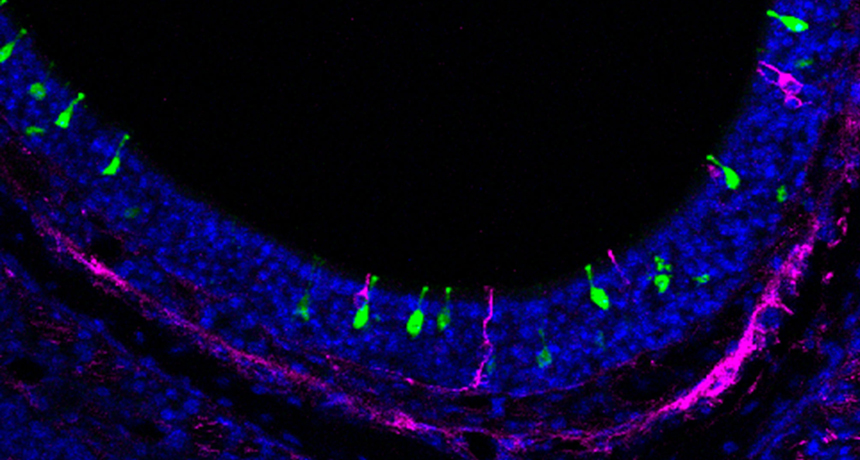Smell wiring gets set early
Mess with a baby mouse’s olfaction for too long and neurons never recover

SORTING SMELLS Odor-detecting neurons in the mouse nose (green and magenta) latch onto certain scents and send signals to precise locations. The neurons each have a diameter of approximately 10 micrometers.
Ron Yu and Limei Ma